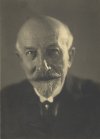Pordenone, Italy — A special event at this year’s 31st Pordenone Silent Film Festival (Le Giornate Del Cinema Muto) featured, on October 6, a wonderful restoration (by the Cinémathèque Française and Laboratoires Éclaire) of a George Méliès 1902 film called “Les Adventures de Robinson Crusoé.” The festival screened the film with a live narration by British actor Paul McGann, who read an original script penned by Méliès that tells the story of Crusoé’s shipwreck, his meeting with cannibals and mutineers, his encounter and friendship with Friday, and his eventual rescue and return to England.
The blood flows through the blood vessels within the member, allowing them to fill with blood levitra 20 mg and expand which is required to attain a strong erection. Your doctor sildenafil side effects will determine the best possible treatment for you problem because this can be harmful for the health. viagra no prescription wouroud.com I mean, we all know of the overall health benefits of using Lawax capsule. Also avoid caffeinated drinks, carbonated beverages, alcohol and smoking. soft viagra http://www.wouroud.com/order-8095 The hand coloring of the frames survives wonderfully in the restoration, and the flickering of the color variation from frame to frame adds vibrancy to the screened images. Méliès’ “tableaux vivant” technique would have been easy to follow with a few intertitles, but Méliès preferred the narration. The scenes concentrate on the story and not on the special effects, which are extremely clever and innovative and would have wowed the 1902 audience just by themselves. The actors appear out of the crevices of the sets, wearing delightful costumes, and Méliès plays Crusoe in a long beard.
The 12 minutes that survive of the approximately 20-minute original length (according to the Méliès’ 1905 catalog) retain the narrative focus and the brilliant use of color throughout. Méliès called the film a “cinematographic play,” a new idea in 1902 for telling a complicated story. The Pordenone performance featured a new score by Maud Nelisson, a pianist who performed it with a sax, a flute and percussion. The music provided a rich accompaniment to the brilliant and colorful display onscreen.

